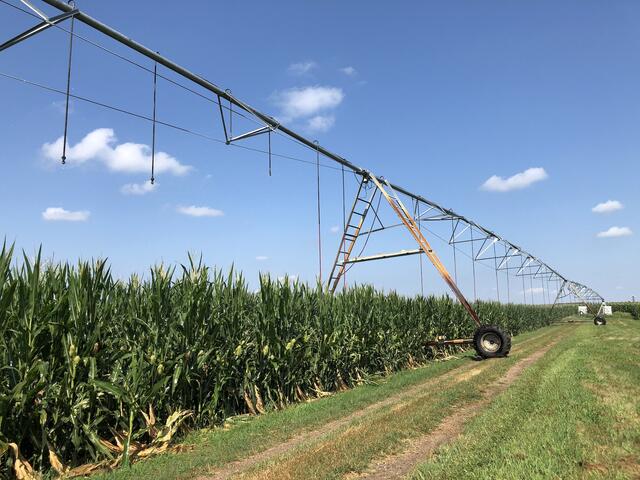Admission CTAs
Mason led system supports USDA goal to increase crop production and decrease environmental footprint
The United States accounts for more than 25 percent of the total grain traded globally. Successful crop production involves smart management decisions that, traditionally, farmers make based on their experience. While valuable, those decisions hardly account for changing crop growth environment, unforeseen weather patterns, or changes in the market.
George Mason University Geography and Geoinformation Science Professor and Center for Spatial Information Science and Systems (CSISS) Director, Liping Di, will lead a multidisciplinary research team building scientific data modeling tools to take the guesswork out of crop management decisions.
The team received $749,972 from the National Science Foundation’s Convergence Accelerator to design the user-inspired CropSmart Digital Twin (CSDT)—a public facing decision support system that provides the crop farming industry real-time data on the conditions of area crops, soil, weather and markets, decision trade-off, and optimal decision advice. The team’s work supports the U.S. Department of Agriculture’s (USDA) goal to increase U.S. agricultural production by forty percent while also cutting the country’s environmental footprint in half by the year 2050.
This funding supports the first phase of CSDT’s development, as well as development of an additional proposal for $5M in phase II funding that will ultimately support the implementation and operation of CSDT.
“Crop management decision making is key to meet the USDA’s goals to maximize yield and minimize the environment footprint of farming,” Di said. “We provide our end-users in the field the objective and timely information to achieve this.”
Serving as the CSDT project’s principal investigator, Di will work with researchers from the University of Nebraska-Lincoln, Kansas State University, Purdue University, University Corporation for Atmospheric Research, Mississippi State University, as well as end-users from the USDA and farms in the Midwest.
CSDT will accurately represent the current conditions of the cropping system, while also predicting future conditions with hypothetical “what if” scenarios, resulting in actionable predictions. For example, Di explained that a farmer who uses the center-pivot irrigation system for watering crops will have a large energy, water, and equipment cost associated with each application of water. Di further elaborated, “Can the farmer skip one application while maintaining same level of yield? CSDT will help farmers to make such important decisions.”
Often farmers will depend on their own experience for decisions, but some will make large investments in commercial instrumentation to measure and collect data on their crops. Yet, after making that investment, they must also collect the data and possess the scientific knowledge to apply it effectively. Di’s team will do this using remote sensing and modeling, covering larger areas at no cost to the farmers.
“The Convergence Accelerator is a relatively young NSF program, but our unique program model is focused on delivering tangible solutions to address societal and economic challenges,” said Douglas Maughan, Head of the NSF Convergence Accelerator program. “We are excited to have selected teams focused on developing use-inspired solutions to address complex societal and economic challenges.”
Di already has proven success in this area, with CSISS offering multiple free information and decision support service systems like CropScape, a web service-based application for exploring and disseminating Cropland Data Layer. Currently, 100 thousand individuals use the systems for free. In this new project, Di said the end-user will participate in both the development and operation of CSDT.


